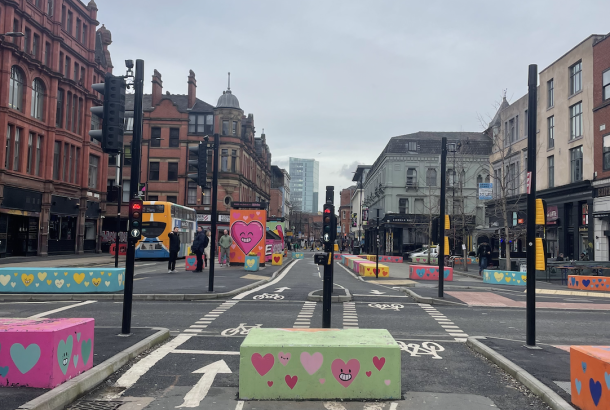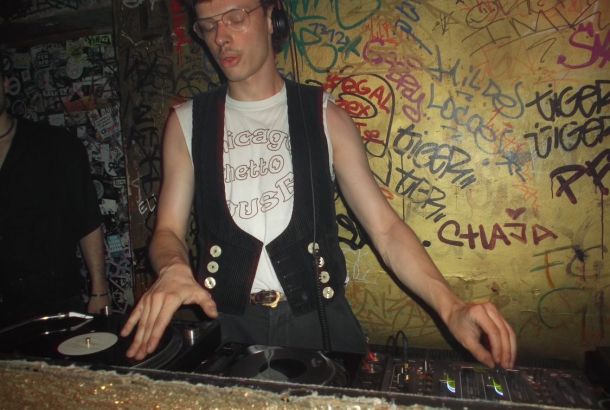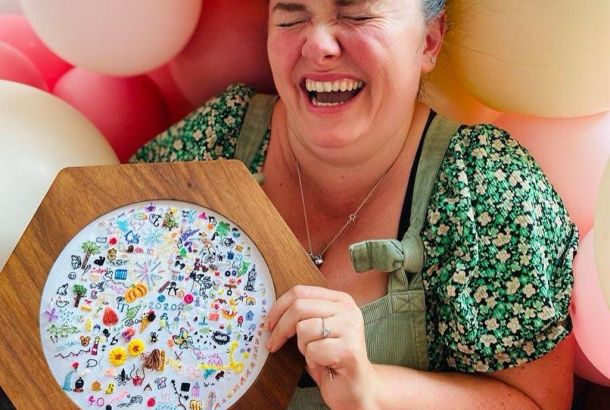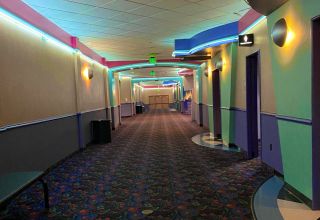Reassembling the self: the art of schizophrenia
Susan Aldworth, collaborating with works by Camille Ormston and Kevin Mitchinson who both have schizophrenia, created the ‘Reassembling the Self’ exhibit. Combining art, science, psychiatry and individual histories, Aldworth has created works that explore the different perceptions and experiences of an individual with schizophrenia.
Aldworth studied Philosophy at Nottingham University and printmaking at Sir John Cass in London. She has been described as an experimental printmaker and filmmaker, producing Memoires, a short film about schizophrenia.
Kevin Mitchinson suffered from auditory hallucinations, anxiety, depression and episodes of paranoia. The voices were described as:
‘Continually present, at times shouting and bullying, and always critical of his every thought and action’.
He stated that art has helped him reach his current level of recovery, where he is in control of his voices and is rarely paranoid. His confidence also remains at a high.
Camille Ormston has painted seriously since 1996 and investigates herself as the subject of the works. Art has also aided Camille’s recovery and improved her confidence.
Professor Anya Hurlbert at Newcastle University has described the exhibition as being ‘at heart about human identity, the sense of self and how it holds itself together’.
She further stated that:
‘From the human mind comes human identity, a constant subject of Susan Aldworth’s work’ and
‘In people with schizophrenia, the brain rhythms go awry, perceptions disintegrate, and so-it is thought-does the sense of self.’
There are many misconceptions about the condition of schizophrenia. It is usually confused with other condition such as multiple personality disorder. At the core, the NHS describe it as ‘a mental health condition that causes a range of different psychological symptoms, including:
• Hallucinations – hearing or seeing things that do not exist.
• Delusions – unusual beliefs not based on reality which often contradict the evidence.
• Muddled thoughts based on the hallucinations or delusions.
• Changes in behaviour.
Treatments include antipsychotic medication, talking treatments such as cognitive behavioural therapy, social support and community activities to encourage recovery such as art therapy.
There is a stigma attached to schizophrenia, as mentioned previously, the idea that it is a ‘split personality disorder’ or that sufferers are violent. On the contrary, the majority of people suffering with schizophrenia are not violent. Professor Anya Hulbert said:
‘The diagnosis of schizophrenia often still elicits fear and condemnation at the worst, pity and protectiveness at best.’
She further stated that other disorders such as depression or bipolar disorder have been somewhat normalised in society, whereas schizophrenia has not. This is likely due to it being less common and the misunderstanding of symptoms as being dangerous. She said:
‘Everyone knows what it feels like to be depressed. But what does it feel like to be ‘schizophrenic’?’
A lot of work went into achieving this project, including interviewing people with schizophrenia, studying electrophysiology, visual psychophysics etc. and discussing treatments with psychiatrists.
Why did you decide to do it?
For the last 15 years, my work as an artist has focused on what it means to be human. I studied Philosophy at university before I studied Fine Art, and I always had an interest in the relationship between the mind and the body. There was a moment in 1999, when I found myself on a hospital operating table having a brain scan – I could see into the workings of my brain, real time, on a monitor as they scanned it whilst I was still conscious. I was watching myself think. It was an epiphany! This brain landscape was worth exploring as an artist. And also, the imagery of the scans was uniquely beautiful. It left me wondering what is human consciousness? How is it summoned up from the 3 pounds or so of flesh of the brain?
Since then, I have spent my time considering what it is to be human. I have worked with scientists, doctors and people with Alzheimer’s, Schizophrenia, Epilepsy, and Downs Syndrome. I have talked to Philosophers and psychologists. I work across traditional academic disciplines. All these different narratives have an influence on my work.
Contemporary scanning techniques give us access to the internal living body, with imagery that is both beautiful and vital. Neuroscience is beginning to unravel how the brain works and presenting to us with extraordinary digital images. I would be crazy to ignore this new profound visual language.
Neuroscience is a profoundly visual science – and the scans of the brain provide me, as an artist, with a new visual link between the external surface of the body and the subjective experience of being that person. The relationship between mind and body.
But at the heart of my work, is an interest in what it is to be me, and more interesting, what it is to be someone else. I am not a scientist. I am not trying to solve the hard problem of human consciousness. Neither is my work simply illustrative – I am not trying to represent the physical brain or explain science. I am working with contemporary scanning technologies, and tapping into a contemporary interest or belief in neuroscience as the latest creed to offer a rational explanation of the human condition. My work is simply about what it is to be human… I work across academic disciplines to explore and examine ideas. But in the end my work is art. It asks questions but never tries to proffer solutions.
Reassembling the Self was a portraiture and self-portraiture project exploring schizophrenia which I developed during my time as Artist in Residence at the Institute of Neuroscience at Newcastle University from 2010- 2013. I worked with basic scientists, clinicians and two artists with a schizophrenia diagnosis exploring some of the complex narratives of schizophrenia. It was a difficult project.
Schizophrenia is poorly understood and the main purpose of the project was to address some of the misconceptions and stigma around the condition. Initially I had planned to make portraits of Camille and Kevin, two artists with a schizophrenia diagnosis who I was working with on the project. But their self-portraits were more powerful and authentic than any representation I would make. I decided to include their extraordinary work in the exhibition.
I made word portraits of Kevin and Camille ‘Dreaming Voices 1 and 2’ which were made up from their own words when describing the ‘internal voices that they hear.
Has it been something you’ve worked on for quite a while?
I started making the work for the exhibition in 2011. I was lucky enough to work with the legendary lithographer Stanley Jones who invited me to work with him on the 12 lithographs you see in Reassembling the Self. These are aggressive and difficult works. The reassembled anatomy is a metaphor for the pain and difficulty of having schizophrenic when you can feel that your self is being stolen away from you by your own anatomy. The relationship between the physical brain and your sense of self in this context is very complicated.
Did you find it hard or easy to depict it in an artistic way?
It was very challenging. I didn’t want to make any statement myself about what schizophrenia might or might not be. I wanted to make work which invited the audience to experience an alienation from their sense of Self.
So, the Reassembling the Self lithographs are formal portraits of Schizophrenia itself. The idea is simple. A body attacks itself – and this is represented by a reassembled anatomy where huge ear bones and a hip bone become the shoulders bones, where a large pair of ears form an arse. A distorted anatomy as a visual equivalent of distortions to ones sense of Self which can happen in schizophrenia.
These prints also show the extraordinary technical versatility of lithography as a form. These are plate lithographs. Seamlessly I was able to mix digital photography, ancient anatomical illustrations with drawn marks and a painterly quality. Colour is subtle. I can’t think of any other technique which would have let me do this.
I also used eye tracking technology to make a self-portrait called Self 2. It was an interesting experiment to draw with one’s eyes rather than one’s hand. The process exposed the way one looks at things rather than the way one draws. It also might tell us something about the way an individual perceives the world.
Do you think there is a general misconception about people with schizophrenia?
People with schizophrenia are often treated appallingly in the press. There is a huge amount of ignorance and mythology around the condition. This ‘bad press’ can lead to people feeling socially isolated. But like all conditions, it is on a spectrum… and not very different from being me or being you.
What do you hope the ‘Reassembling the Self’ project will do to Schizophrenia, if anything?
I hope that the exhibition and the project will open up wider discussion about the experience of schizophrenia. And maybe help to explode some of the stigma surrounding the condition. This is the third time we have shown this exhibition in the UK, and each time it has attracted an interested and diverse audience.
There is a symposium about schizophrenia organized by Manchester University, open to all, at Waterside Arts Centre on May 13th. We hope to bring together under one roof many different people, from varied backgrounds, academic and non-academic, people affected by and dealing with schizophrenia including clinicians, mental health professionals, artists and interested people to explore many aspects of living with, and treating schizophrenia. It promises to be a very special day. All welcome but you need to register.
Did the use of different materials (e.g. etching and lithograph) intend on sending out a different message in your art? Same with the use of colour contrasts e.g. black and white.
As I described I worked with Stanley Jones at the Curwen Studio to make the lithographs. The etchings were commissioned by the Arts Council last year to add to the exhibition as it toured the UK. I wanted to make work which explored the fragility of human identity. How a stroke, or a brain injury or illness can fundamentally change who we are. I am a hairdresser’s daughter, and have always been fascinated by hair. Hair is about lots of lines working together on your head. It is also very near to the brain – hair grows from the skull.
I wanted to use human hair to draw with, and I worked with master printer Nigel Oxley to make The Entangled Self suite of etchings you can see in the exhibition. The etchings continue my interest in making work printing with marks taken directly from the human body in an exploration of human identity and portraiture. Hair produces extremely fragile lines – at the limit of what you can capture on an etching plate. These prints are a reflection on how fragile our sense of who we are really is.
In the film Memoirs, how did you go about making it and why did you use and what was the significance of the dancing figures?
My film ‘Memoirs’ was based on an extraordinary account by Daniel Paul Schreber in 1895 of his descent into psychosis.
‘Can there be any prospect more terrible for a human being …than the prospect of losing one’s reason ‘, Daniel Paul Schreber, Memoirs of My Nervous Illness 1895
I worked with the animator and composer Barney Quinton. We collage together archive film footage from the Welcome Film Library, working from the images that Schreber described in his book. Schreber reveals how he “considered himself chosen to redeem the world, and to restore to it the lost state of Blessedness. This, however, he could only do by first being transformed from a man into a woman….” and the dancing figures represent his wish to become a woman.
Reassembling the Self is a free exhibit at the Waterside Arts Centre in Sale and is running until Saturday 30th May 2015.







